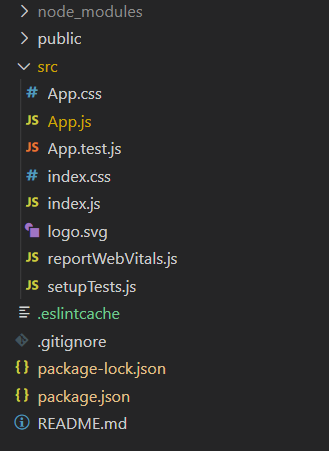ReactJS Blueprint InputGroup Component
Last Updated :
10 Jul, 2021
BlueprintJS is a React-based UI toolkit for the web. This library is very optimized and popular for building interfaces that are complex data-dense for desktop applications.
InputGroup Component provides a way for users to provide them a text input. It is a basic component to collect data from the user. We can use the following approach in ReactJS to use the ReactJS Blueprint InputGroup Component.
InputGroup Props:
- asyncControl: We can control the value of this input with asynchronous updates when this is set to true.
- className: It is used to denote the space-delimited list of class names to pass along to a child element.
- defaultValue: It is used to denote the initial value of the input, for uncontrolled usage.
- disabled: It is used to indicate whether or not the input is non-interactive.
- fill: It is used to indicate whether or not the component should take up the full width of its container.
- inputRef: It is used to denote the ref handler or a ref object that receives HTML <input> element backing this component.
- intent: It is used to denote the visual intent color to apply to the element.
- large: It is used to indicate whether or not this input should use large styles.
- leftElement: It is used to denote the element to render on the left side of an input.
- leftIcon: It is used to denote the name of an Icon to render on the left side of the input group just before the user cursor.
- onChange: It is used to denote the change event handler.
- placeholder: It is used to denote the placeholder text in the absence of any value.
- rightElement: It is used to denote the element to render on the right side of the input.
- round: It is used to indicate whether or not the input (and any buttons) should appear with rounded caps.
- small: It is used to indicate whether or not this input should use small styles.
- type: It is used to denote the HTML input type attribute.
- value: It is used to denote the form value of the input, for controlled usage.
TextArea Props:
- className: It is used to denote a space-delimited list of class names to pass along to a child element.
- fill: It is used to indicate whether or not the text area should take up the full width of its container.
- growVertically: It is used to indicate whether or not the text area should automatically grow vertically to accommodate content.
- inputRef: It is used to denote the ref handler that receives HTML <textarea> element backing this component.
- intent: It is used to denote the visual intent color to apply to element.
- large: It is used to indicate whether or not the text area should appear with large styling.
- small: It is used to indicate whether or not the text area should appear with small styling.
Creating React Application And Installing Module:
-
Step 1: Create a React application using the following command:
npx create-react-app foldername
-
Step 2: After creating your project folder i.e. foldername, move to it using the following command:
cd foldername
-
Step 3: After creating the ReactJS application, Install the required module using the following command:
npm install @blueprintjs/core
Project Structure: It will look like the following.

Project Structure
Example: Now write down the following code in the App.js file. Here, App is our default component where we have written our code.
App.js
import React from 'react'
import '@blueprintjs/core/lib/css/blueprint.css';
import { InputGroup } from "@blueprintjs/core";
function App() {
return (
<div style={{
display: 'block', width: 400, padding: 30
}}>
<h4>ReactJS Blueprint TextInput Component</h4>
<InputGroup
disabled={false}
leftIcon="user"
onChange={() => { console.log("Called on change of value") }}
placeholder="Enter your name"
/>
</div >
);
}
export default App;
|
Step to Run Application: Run the application using the following command from the root directory of the project:
npm start
Output: Now open your browser and go to http://localhost:3000/, you will see the following output:

Reference: https://blueprintjs.com/docs/#core/components/text-inputs
Like Article
Suggest improvement
Share your thoughts in the comments
Please Login to comment...